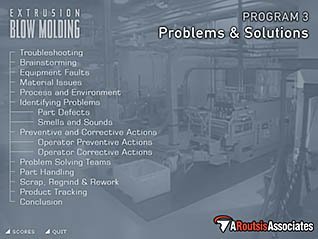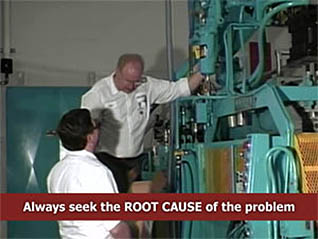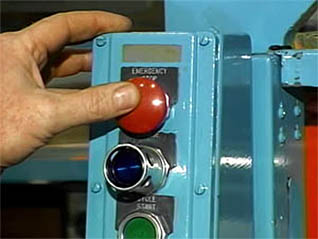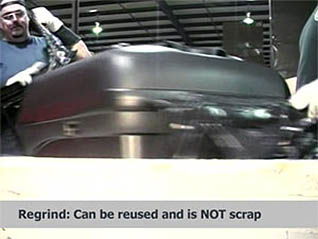Back to Course List
Plastics: Extrusion Blow Molding: Problems and Solutions

- Product ID
- arxbmpas
- Training Time ?
- 58 to 116 minutes
- Language(s)
- English
- Video Format
- Standard Definition
- Required Plugins
- MasteryNet Player
- Lesson Interactions
- 64
- Quiz Questions
- 48



Overview
The final training program in the three-part Extrusion Blow Molding series focuses on possible problems and solutions to each problem. The training series was developed with the Society of Plastics Engineers (SPE). Topics cover a wide range of extrusion blow molding information and common procedures.
Program 3 identifies troubleshooting procedures to follow. Trainees learn about parts defects; scrap, regrind, and rework; preventive and corrective actions to take; and product tracking.
![]() This course is in the Advantage™ format, to read about Advantage™ features click here.
This course is in the Advantage™ format, to read about Advantage™ features click here.

- Rich multimedia presentation with interactions and quiz
- Print certificate and wallet card
- You have 30 days to complete the course
Workplaces
Audience
Anyone working with or going to work with Extrusion Blow Molding.
Topics
The course presents the following topical areas:
- Troubleshooting
- Brainstorming
- Equipment Faults
- Material Issues
- Process and Environment
- Identifying Problems
- Part Defects
- Smells and Sounds
- Preventive and Corrective Actions
- Operator Preventive Actions
- Operator Corrective Actions
- Problem Solving Teams
- Part Handling
- Scrap, Regrind & Rework
- Product Tracking
Intended Performance Outcomes
Upon successful completion of this course you will be better prepared to:
- Define the best troubleshooting procedure.
- Use the best approach is when brainstorming.
- Know how to best determine the cause of product defects.
- Know how to ensure that that feeders, blenders and material ratios are correct.
- Agree that any change to the equipment can cause one or more changes in the product.
- Agree that catching small problems before they become big problems is important.
- Identify common part defects.
- Know how to best identify and deal with uncommon smells and sounds.
- Know how to properly categorize and perform preventive and corrective actions.
- State possible preventive actions that an operator could take.
- State possible corrective actions that an operator could take.
- Know how to best handle problems that occur within a given facility.
- List what is required for a given product to meet the set requirements.
- Be aware that customers require parts manufacturing information.
© Mastery Technologies, Inc.

